Article Cardiovascular

Can climate change lead to an increase in cardiovascular diseases ?
The article discusses the relationship between climate change and cardiovascular diseases, highlighting how extreme heat events, changes in air quality, and extreme weather patterns can contribute to an increase in heart-related illnesses. It explains how dehydration and electrolyte imbalances caused by heat stress can strain the heart, leading to chest pain, shortness of breath, and even heart failure. The article also points out that rising temperatures can cause pollutants like ozone and particulate matter to become more concentrated in the air we breathe, irritating the lungs and reducing oxygen uptake, which can strain the heart. Additionally, extreme weather events like hurricanes, floods, and wildfires can have both direct and indirect effects on cardiovascular health by causing physical trauma, stress, lack of access to medical care, and disruptions in medication adherence and continuity of care for those with chronic cardiovascular diseases. The article concludes by emphasizing the importance of taking steps to protect cardiovascular health, such as staying hydrated during hot weather, monitoring air quality, and having emergency plans in place for natural disasters.

Can exercise reduce the risk of developing cardiovascular diseases ?
Cardiovascular diseases (CVDs) are a leading cause of death worldwide, and regular physical activity or exercise is one of the most effective ways to reduce the risk of developing them. Exercise helps improve blood circulation, lower cholesterol levels, reduce inflammation, manage weight, and improve glucose control. The American Heart Association recommends at least 150 minutes per week of moderate-intensity aerobic activity or 75 minutes per week of vigorous-intensity aerobic activity, along with muscle-strengthening activities at least two days per week.

What role does cardiovascular exercise play in managing daily stressors ?
Cardiovascular exercise is an excellent way to manage daily stressors, as it reduces the body's physiological response to stress and leads to improved mental and physical health. The benefits of cardiovascular exercise include reduced stress levels, improved sleep quality, increased energy levels, and better mental health. To get started with cardiovascular exercise, set goals, start slow, find activities you enjoy, and mix up your workouts. Incorporating cardiovascular exercise into your daily routine can help you manage stress and improve overall well-being.
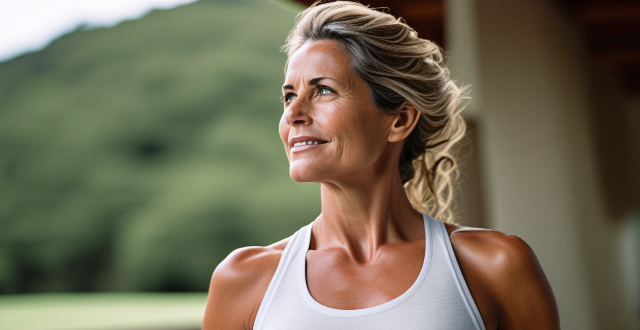
How much exercise do I need to maintain good cardiovascular health ?
Maintaining good cardiovascular health requires regular exercise, with the American Heart Association recommending at least 150 minutes of moderate-intensity aerobic activity or 75 minutes of vigorous-intensity aerobic activity each week, along with two or more days of muscle-strengthening activities. The amount of exercise needed may vary depending on individual needs and fitness level, and other lifestyle factors such as diet, stress management, sleep, and avoiding smoking and excessive alcohol consumption can also contribute to good cardiovascular health.

What is the difference between cardiovascular and resistance training in health management ?
The text discusses the differences between cardiovascular and resistance training, highlighting their unique benefits and examples of each. Cardiovascular training strengthens the heart, aids in weight management, and improves endurance, while resistance training enhances muscle strength, bone density, and metabolism. Combining both types of exercise leads to a well-rounded fitness regimen that addresses multiple aspects of health, including endurance, strength, flexibility, and balance. The text suggests ways to incorporate both forms of exercise into a workout routine for optimal health management.

How does exercise improve cardiovascular health ?
This essay explores the ways in which exercise can improve cardiovascular health. It explains how regular physical activity strengthens the heart muscle, increases blood flow, and lowers blood pressure. The essay also discusses how exercise can reduce risk factors for cardiovascular disease, such as obesity, diabetes, and high cholesterol levels. Additionally, it highlights the positive effects of exercise on mental health and well-being, including stress reduction, depression management, and improved quality of life. Overall, the essay emphasizes the importance of regular exercise for a healthy lifestyle and encourages readers to incorporate physical activity into their daily routines.
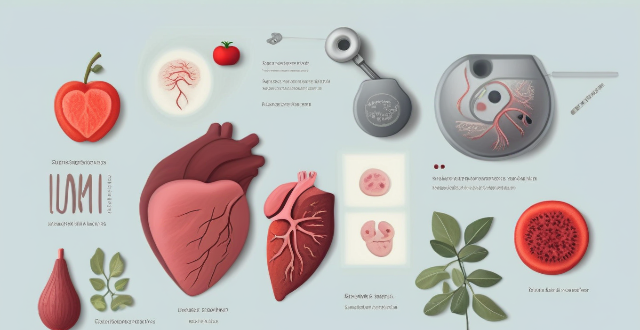
Can aerobic exercise improve my cardiovascular health ?
Aerobic exercise is essential for maintaining and improving cardiovascular health, offering benefits such as strengthened heart muscle, lowered blood pressure, increased HDL cholesterol, reduced inflammation, weight management, improved circulation, and better blood sugar regulation. Regular aerobic activities like walking, jogging, cycling, swimming, or group fitness classes can significantly enhance overall heart health. The American Heart Association recommends at least 150 minutes of moderate-intensity aerobic exercise weekly, spread throughout the week, to achieve these benefits.

Are there any unique considerations for women's cardiovascular health ?
Cardiovascular disease is the leading cause of death among women globally, with unique considerations for their heart health. These include hormonal influences, menstrual cycle impact, pregnancy and postpartum changes, oral contraceptives, autoimmune diseases, polycystic ovary syndrome, lifestyle factors, symptom awareness and response, and preventive care. Recognizing these factors is crucial for improving prevention, diagnosis, and treatment strategies tailored specifically for female patients, ultimately reducing mortality rates from CVD.
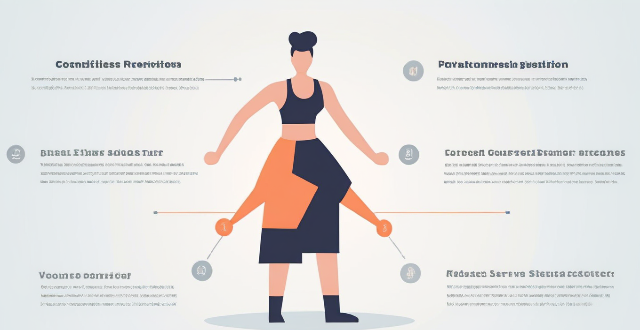
What is a good workout routine for beginners at the gym ?
This article provides a comprehensive guide for beginners on how to start a workout routine at the gym. It includes warm-up exercises, cardiovascular and strength training exercises, and cool down stretches. The article emphasizes the importance of starting slowly and gradually increasing the intensity of workouts. With dedication and consistency, beginners can achieve their fitness goals and improve their overall health and well-being.
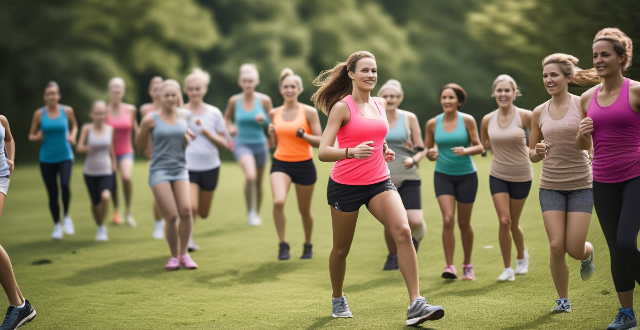
What are some examples of aerobic exercises ?
Aerobic exercises are physical activities that increase heart rate and breathing to deliver more oxygen to muscles, improving cardiovascular health, burning calories, and reducing chronic disease risk. Examples include using cardiovascular machines like treadmills and elliptical trainers, outdoor activities such as running and cycling, group fitness classes including aerobic dance and spinning, sports like basketball and tennis, and low-impact options like brisk walking and water aerobics. Benefits encompass improved heart health, weight management, increased stamina, mental health enhancement, and immunity boost. Safety precautions include consulting a healthcare professional, proper warm-up and cool-down, staying hydrated, and listening to your body to avoid overexertion.

What is the daily workout routine of a famous sports star or celebrity ?
The article discusses the importance of a consistent workout routine for famous sports stars and celebrities, highlighting its benefits in maintaining physical fitness, preventing injuries, and promoting mental health. It then provides examples of daily workout routines of notable figures like LeBron James, Serena Williams, Dwayne "The Rock" Johnson, and Jennifer Lopez, showcasing their diverse approaches to fitness that include strength training, cardiovascular exercises, agility drills, flexibility training, and mobility work. Overall, the article underscores the significance of a well-rounded fitness regimen in achieving and maintaining success in sports and entertainment industries.

What are the favorite exercises of popular celebrities ?
Celebrities have different preferences when it comes to exercise, but they all share a common goal of staying fit and healthy. Some popular exercises among them include yoga, Pilates, cardiovascular exercises, and weight training. Yoga is favored by Jennifer Aniston, Gwyneth Paltrow, and Madonna for its benefits on flexibility, strength, and balance. Pilates is preferred by Kim Kardashian, Vanessa Hudgens, and Kate Hudson for strengthening the core muscles and improving posture. Cardiovascular exercises like running, cycling, and swimming are enjoyed by Taylor Swift, Emma Stone, and Ryan Reynolds for burning calories and improving cardiovascular health. Weight training is popular among Dwayne "The Rock" Johnson, Chris Hemsworth, and Gal Gadot for building muscle mass and increasing strength. Overall, celebrities incorporate these activities into their daily routines to maintain their impeccable physique and overall well-being.
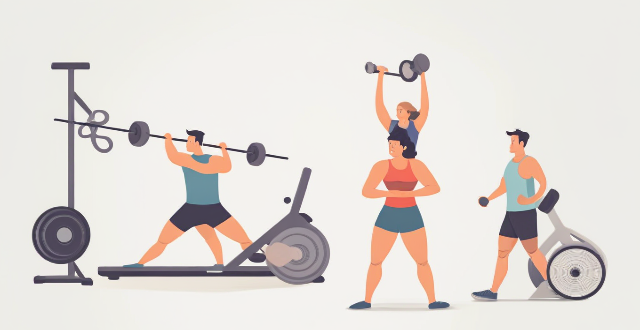
What are the best exercises for recovering from a sports injury ?
Recovering from a sports injury requires a combination of exercises that focus on flexibility, strength, cardiovascular fitness, stretching, and balance/coordination. Range of motion exercises help maintain joint flexibility, while strengthening exercises build muscle strength around the injured area. Cardiovascular exercises improve circulation and promote healing, while stretching exercises reduce stiffness and improve flexibility. Balance and coordination exercises improve stability and prevent future injuries. Incorporating these exercises into your rehabilitation program can speed up recovery and return to sport. It is important to consult with a physical therapist or healthcare professional before starting any new exercise program.
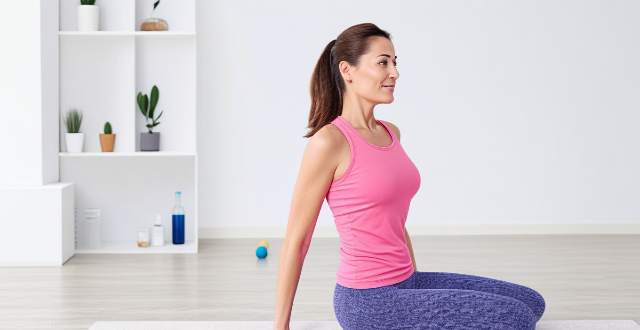
What exercises are beneficial for women's health ?
Regular physical activity is crucial for women's health, preventing chronic diseases, improving mental health, and boosting self-esteem. Aerobic exercises like running, swimming, and cycling are great for cardiovascular health and weight management. Strength training exercises such as weightlifting, resistance bands, and bodyweight exercises can improve bone density and reduce the risk of osteoporosis. Yoga helps to improve flexibility, reduce stress, and enhance mental clarity, while Pilates focuses on core strength, flexibility, and balance. Incorporating these exercises into a fitness routine can lead to improved cardiovascular health, stronger bones and muscles, reduced stress levels, and enhanced overall well-being.

Why is it a mistake to believe that more exercise automatically leads to better health ?
The belief that more exercise automatically leads to better health can be a mistake due to several reasons such as overexertion and injury risk, neglect of other aspects of health, cardiovascular strain, hormonal imbalances, and mental health impact. It is important to recognize that more is not always better and a balanced approach that incorporates appropriate amounts of exercise along with attention to nutrition, rest, and overall wellness is key to achieving optimal health outcomes.

Are there specific supplements recommended for women's health upkeep ?
The article provides a summary of the top supplements recommended for women's health, including Vitamin D, Calcium, Iron, Folic Acid, and Omega-3 Fatty Acids. These supplements support bone health, muscle function, immune function, cardiovascular health, cognitive function, and overall energy levels. The article emphasizes the importance of consulting with a healthcare provider before starting any new supplement regimen to ensure safety and effectiveness.

How can I improve my teaching skills as a fitness instructor ?
This article provides tips on how to improve teaching skills as a fitness instructor. It suggests developing knowledge of fitness and exercise science, enhancing communication skills, creating engaging workouts, and continuously evaluating and improving teaching methods. The article emphasizes the importance of staying up-to-date with current research and best practices, practicing active listening and empathy, designing well-rounded fitness programs, fostering a supportive community within classes, seeking feedback from clients, and reflecting on one's own performance. By following these tips, fitness instructors can provide higher quality service to their clients and achieve better client outcomes.

Which celebrity just released a new song or album ?
This article discusses the latest releases from popular artists, including Taylor Swift's folklore-inspired single "Willow", Adele's highly anticipated comeback with her pop ballad "Easy On Me", and BTS's K-Pop album "BE (Deluxe Edition)". The article also encourages readers to discover new music and enjoy the talents of various musicians.

Are there any budget-friendly options for heating and cooling my home efficiently ?
This article discusses budget-friendly options for efficient heating and cooling, including programmable thermostats, ceiling fans, ductless mini-split systems, and solar panels. It highlights the energy efficiency and cost-effectiveness of these solutions, as well as their customizable settings and aesthetic appeal. The article also emphasizes the importance of considering factors such as climate, local regulations, and personal preferences when choosing the best option for your needs.

How do I choose the right backpack for my outdoor adventure ?
The article provides guidance on how to choose the right backpack for outdoor adventures. It suggests considering factors such as size and capacity, comfort, durability, organization, and accessibility. The article also offers tips for trying on a backpack, including wearing appropriate clothing, adjusting straps, adding weight, and taking a test walk.
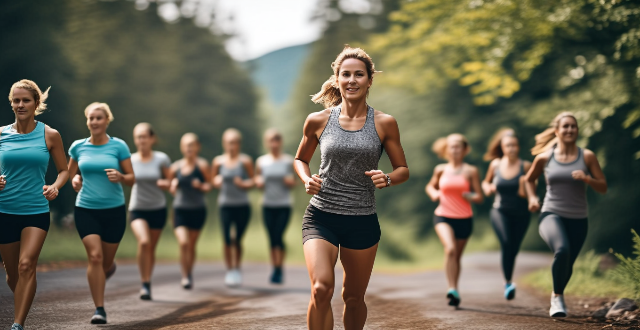
What are the best workout routines for women ?
The article provides a list of the best workout routines for women, including cardiovascular exercises like running, cycling, and swimming; strength training exercises like weight lifting, resistance bands, and bodyweight exercises; yoga and Pilates; high-intensity interval training (HIIT) like Tabata, circuit training, and jump rope; group fitness classes like Zumba, kickboxing, and barre; outdoor workouts like hiking, rock climbing, and stair climbing; and low-impact workouts like walking, elliptical machine, and rowing machine. These workouts can help women improve their overall fitness, strength, flexibility, balance, and cardiovascular health.

How can children be encouraged to speak up if they feel unsafe ?
The article emphasizes the importance of creating a safe and supportive environment for children to express themselves without fear of judgment or criticism. It suggests educating children about personal safety, role-playing different scenarios, and discussing potential consequences of not speaking up if they feel unsafe. The article also recommends teaching children who to trust, encouraging them to use their voice, and providing options for seeking help. Overall, it highlights the significance of empowering children to take action and advocate for their own safety.

Can economic growth be achieved while also protecting the environment ?
The article explores the complex relationship between economic growth and environmental protection. It presents two perspectives: the trade-off perspective, which suggests a conflict between the two goals, and the win-win perspective, which argues that they can coexist. The article then outlines strategies for achieving both objectives, including investing in green technology, promoting sustainable business practices, implementing government policies, and raising public awareness. It concludes that collaboration among stakeholders is necessary to create a sustainable future.

What are some unique street food dishes from around the world ?
This article provides an overview of various unique street food dishes from different parts of the world. It highlights dishes such as Poutine from Canada, Ceviche from Peru, Satay from Indonesia, Falafel from the Middle East, and Jalebi from India. The article describes each dish's key ingredients and characteristics, highlighting their cultural significance and culinary traditions.

What are some examples of recent extreme weather events ?
This article discusses recent examples of extreme weather events that have caused significant damage to human life, property, and the environment. These include Hurricane Ida (2021), Australian Bushfires (2019-2020), California Wildfires (2020), European Heatwave (2019), Japanese Typhoon Hagibis (2019), and Indian Cyclone Amphan (2020). The article concludes by emphasizing the need for individuals, communities, and governments to take action to mitigate the effects of these events and adapt to changing weather patterns.

Are there any risks associated with aerobic exercise ?
Aerobic exercise, also known as cardio, is a popular form of physical activity that involves increasing your heart rate and breathing hard for an extended period of time. While aerobic exercise has numerous health benefits, it is important to be aware of the potential risks associated with this type of exercise. In this article, we will discuss some of the risks associated with aerobic exercise and how to minimize them. Overexertion is one of the most common risks associated with aerobic exercise. To avoid overexertion, it is essential to start slowly and gradually increase the intensity and duration of your workouts. Another risk associated with aerobic exercise is the potential for injuries. To reduce the risk of injury, it is important to wear appropriate footwear and clothing, warm up before exercising, and use proper form and technique when performing exercises. Dehydration is another risk associated with aerobic exercise. To prevent dehydration, it is important to drink plenty of water before, during, and after your workouts. While rare, cardiovascular events such as heart attacks and strokes can occur during aerobic exercise. To minimize the risk of cardiovascular events, it is important to undergo a thorough medical evaluation before starting an aerobic exercise program.

What role does credit scoring play in credit management ?
This article discusses the importance of credit scoring in credit management. It explains what credit scoring is, its role in risk assessment, fairness and objectivity, efficiency and accuracy, customization, and compliance with regulations. The article emphasizes that credit scoring is a crucial tool for lenders to evaluate borrowers' creditworthiness and make informed decisions about approving loans.

How have recent climate disasters impacted the discourse on global climate governance ?
The article discusses how recent climate disasters have impacted the discourse on global climate governance. It highlights increased awareness and urgency of addressing climate change, focus on resilience and adaptation measures, and the need for collaboration and cooperation among nations. The article concludes that effective strategies and policies are necessary to mitigate the impacts of climate change and ensure a sustainable future.
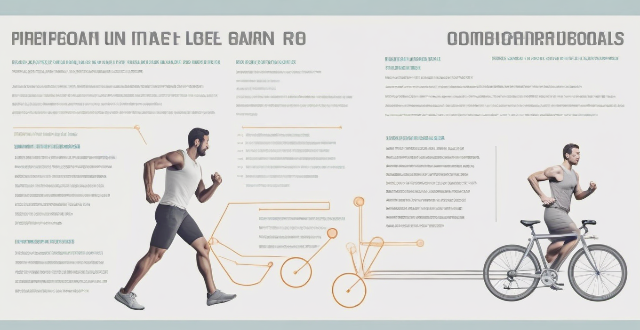
Are there any specific sports or exercises recommended for professionals working long hours ?
The article provides a list of recommended exercises for professionals working long hours, including cardiovascular exercises (walking/jogging, cycling, swimming), strength training exercises (bodyweight exercises, resistance band training, kettlebell training), and flexibility and balance exercises (yoga, Pilates, Tai Chi). The article also offers tips for incorporating exercise into a busy routine, such as setting realistic goals, making time for exercise, and mixing up workouts to prevent boredom and plateauing.